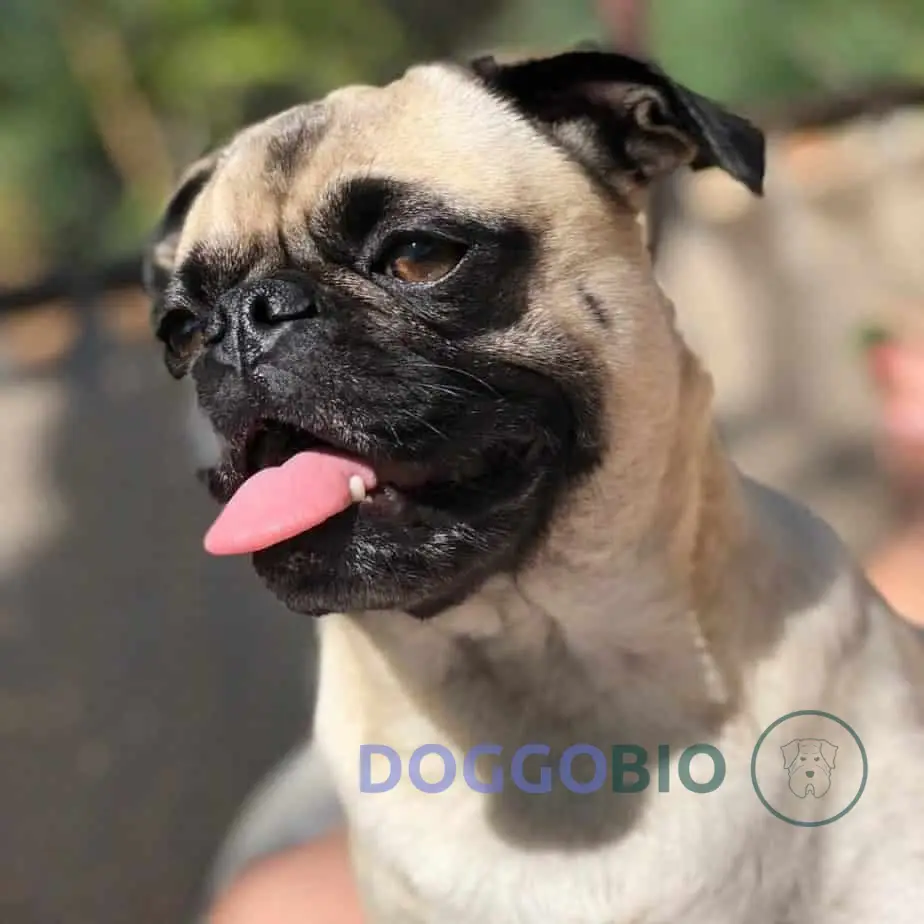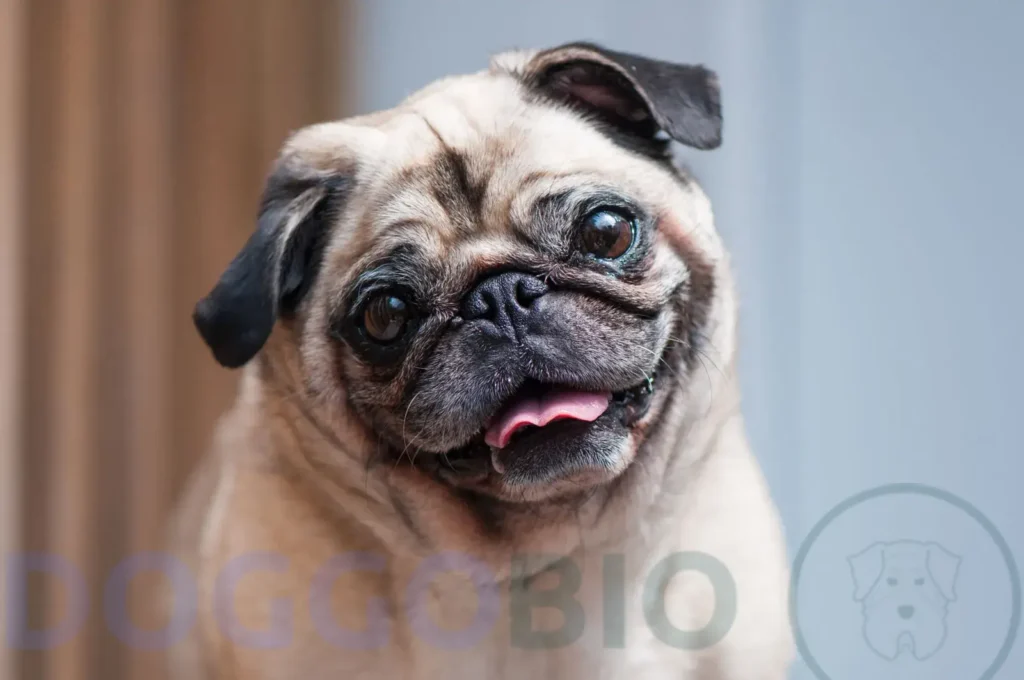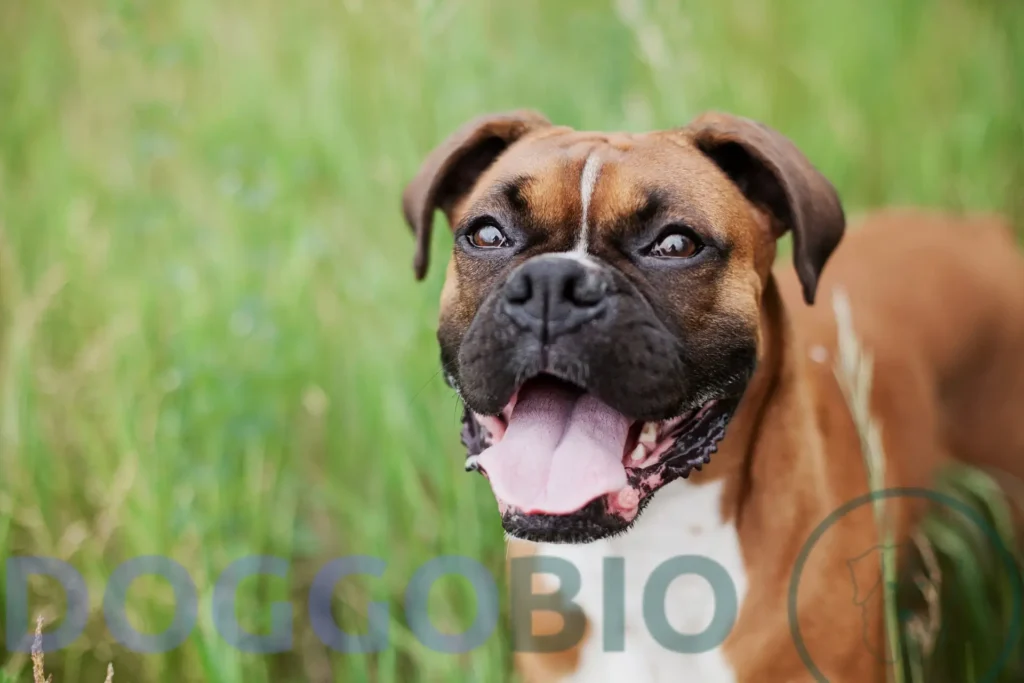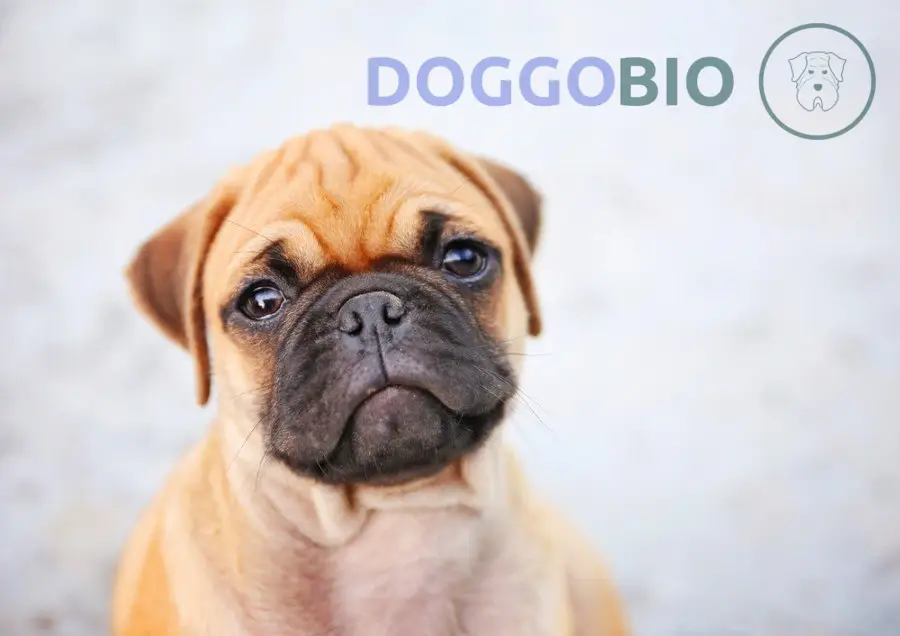Welcome to the wonderful world of canine companions, where breeds come together to create delightful and unique hybrids. Among these captivating combinations is the charming and endearing Boxer Pug Mix, a lovely blend of two beloved breeds, the Boxer and the Pug. This enchanting crossbreed inherits the best qualities from both parents, resulting in a furry friend that is not only visually striking but also possesses an incredible personality that will surely win your heart.
In this article, we will explore the origins, physical attributes, and temperamental traits of the Boxer Pug Mix, shedding light on the joys of welcoming this lovable hybrid into your home.
A Brief Overview of Pug Boxer Mix
| Breed Name | Boxer Pug Mix |
| Other Names | Poxer, Pug Boxer, Box a Pug, Boxer Cross Pug, Pug Boxer Mix |
| Lineage | Boxer (parent breed), Pug (parent breed) |
| Purpose | Watchdog, Companion |
| Temperament | Loyal, Alert, Playful |
| Size Category | Medium to Large |
| Weight Range | 20-26 pounds (9-12 kg) |
| Height Range | Male: 14-22 inches (36-56 cm); Female: 12-20 inches (30-51 cm) |
| Coat | Short, Smooth, Various Colors (black, white, tan, brindle, fawn) |
| Exercise Needs | 20-40 minutes of daily activity |
| Common Health Concerns | Eye injuries due to facial structure |
| Lifespan | Average 10-14 years |
| Initial Cost | $400-$1800 |
What is Boxer Pug Mix?

The Boxer Pug Mix, also known as the Pug Boxer Mix, is a delightful hybrid from crossing the Pug and Boxer purebred dogs. This charming mix is ideal for small families with limited space, as they don’t require extensive room to stay happy. Plus, they make excellent guard dogs, providing added security for your home and loved ones.
One fascinating aspect of this hybrid is the diverse temperaments seen within a single litter. Since the parent breeds, Pug and Boxer, possess contrasting characteristics, the Boxer Pug Mix pups can vary widely. Some may inherit the active and energetic lifestyle of the Boxer, while others could take on the more laid-back, couch potato attitude of the Pug. The wide range of personalities adds excitement to welcoming a Boxer Pug Mix into your family!
Parent Breeds of Pug and Boxer mix
The Boxer Pug Mix is an intriguing blend of the Boxer and Pug breeds. It inherits the protective nature of the Boxer and the quirky charm of the Pug. These parent breeds differ in their folds, with Boxers having facial folds and Pugs sporting full-body rolls. Additionally, Boxers have short faces, while Pugs have flat ones. Their temperaments also vary, with Boxers being stubborn and Pugs known for their mischievousness.
Exploring the history of these breeds helps us understand the behavior of the Boxer Pug Mix better.
History of Pug

The Pug breed, with its distinctive flat face, has a history tracing back to China before being transported to Holland via Dutch trading ships. Its name “Pug” originates from the Latin word “pugnus,” referring to its fist-like head.
In the past, dogs were fashionable accessories, much like jewelry today. Pugs gained popularity as they became cherished companions to figures like Napoleon’s wife and the Duke and Duchess of Windsor. They even saved the life of the Prince of Orange, earning them the title of the official dog of the House of Orange.
History of Boxer

The roots of Boxer dogs stretch back to 19th-century Germany, where they are thought to be descendants of the now-extinct Bullenbeisser breeds.
Initially, Boxers were bred as skilled sports dogs, but their purpose evolved to include herding and managing cattle.
The name “Boxer” is said to have originated from the German term “Boxl.” Only after World War I did, Boxer dogs make their way to America, gaining popularity in the 1940s.
Interesting Facts about Pug Boxer Mix

1. Box-a-Pugs are Typically First-Generation Hybrids
Box-a-Pugs are usually the offspring of two purebred dogs crossed together, unlike some designer breeds with “established” generations. This is because maintaining the distinctive “boxer” appearance becomes challenging through multiple generations of breeding.
2.Box-a-Pugs: Excellent Watchdogs
Box-a-Pugs are an excellent choice if you’re seeking a guard dog in a smaller package. Combining their Boxer traits, they possess a protective nature, and despite their size, they have a surprisingly deep and formidable bark. Rest assured. These little pups can keep an eye out for you and your family!
3. Box-a-Pugs: The Ultimate Couch Potatoes
Even though Box-a-Pugs can be pretty energetic in their younger years, the Pug side of the mix tends to mellow out the hyperactivity commonly seen in other Boxer hybrids. While they require daily exercise to stay healthy, these delightful pooches will happily spend most of their time sleeping on the couch, providing the perfect companionship for relaxed and cozy moments.
What does a Pug Boxer Mix look like?

- A Pug Boxer Mix is an adorable blend of traits, featuring a short muzzle, expressive brown eyes, and a black nose.
- They have a medium-sized frame and a short, straight coat, making grooming relatively easy. However, they do shed frequently due to their dense fur.
- Depending on genetics, they may have an underbite or undershot jaw like the Boxer.
- Their most striking feature is their soulful eyes, but their flat face requires extra care to prevent potential eye injuries, so be cautious to avoid accidents.
Size, height, and Weight
The Pug Boxer Mix has a charming medium-sized body, falling between the larger Boxer and the smaller Pug in size. It leans closer to the Boxer’s dimensions when fully grown.
Remarkably, its size is similar to that of a French Bulldog Pug Mix, making it an ideal choice for families seeking a lovable companion of the right size.
| Height Range | Weight Range | |
| Male | 13-23 inches | 18-28 pounds |
| Female | 12-21 inches | 18-27 pounds |
Coat colors and Types
The Boxer Pug mix has a short, sleek coat that is dense and smooth, requiring minimal grooming with just a weekly brush. They inherit various coat options from both parent breeds.
- From the Boxer side, they may have short, smooth coats in fawn and brindle colors, often with white on the underbelly called “flash.”
- From the Pug side, they might have a double coat with short, straight fur in fawn or black, although they tend to shed more.
This mix can showcase striking combinations of these coat qualities that you may encounter around town or at the park.
Temperament and Personality
Box-a-Pugs, as a hybrid breed, can display a range of personality traits within a litter. They enjoy spending quality time with their humans and typically inherit the Boxer’s trainability, although some stubbornness may emerge. Early socialization is crucial to ensure their friendly nature and reduce the likelihood of aggression towards strangers.
They can be a good fit for families with older children, but their smaller size requires careful handling. Box-a-Pugs make delightful playmates, are protective if needed, and thrive on attention. However, highly active households may be a bit challenging for them to keep up with.
Exercise Requirements and Training
The Boxer Pug Cross is a playful mix that requires regular exercise to maintain optimal health. While their energy levels may vary depending on their genes, they still need a consistent exercise routine to keep them healthy and mentally sharp. Aim for about 40 minutes to an hour of exercise per day, and they can handle up to 9 miles of walking per week.
When it comes to training, Boxer Pugs are intelligent and trainable. Boxers are generally easy to train but may display stubbornness at times. Pugs, on the other hand, can be mischievous and less interested in training. To prepare them effectively, keep these tips in mind:
- Teach them obedience: Start with basic commands like “Sit,” “Stand,” and “Up” to establish a strong foundation for further training. Show them who is in charge and reinforce obedience from the beginning.
- Positive reinforcement: Encourage and reward good behavior with treats and positive verbal cues. Avoid scaring them, as it may discourage them from learning.
- Use games for training: Make training fun by incorporating games. This keeps them engaged and excited to participate, making the process enjoyable for both of you.
- Be patient: Every dog learns at its own pace, so be patient and understanding during training. Guide them through the training with kindness and consistency.
With time and effort, your Boxer Pug will learn and respond positively to your training, making it a rewarding experience for both of you.
Grooming and Cleaning
Grooming your Boxer Cross Pug is simple and essential for their well-being:
- Brush their coat 2-3 times a week to keep it clean and remove loose hair.
- Clean the folds and wrinkles, especially around their head, to prevent bacterial growth.
- Regularly check and clean their eyes for potential health issues.
These basic grooming routines will help your Boxer Cross Pug stay healthy and look their best. Don’t forget to clean their ears, trim their nails, and maintain their overall hygiene.
| Grooming Aspect | Grooming Frequency |
| Coat Brushing | 2-3 times a week |
| Nail Trimming | Every 2-4 weeks or as needed |
| Teeth Cleaning | 2-3 times a week using dog toothpaste |
| Bathing | Every 4-6 weeks or as needed |
Food and Diet
For a healthy Boxer Pug Cross, provide around three cups of quality dog food daily. Avoid overfeeding and opt for food without harmful additives or fillers. Homemade meals with fresh ingredients like lean meat, vegetables, and fruits are an option.
Supplement with canine vitamins and minerals if needed. Adjust their food based on age, using specialized formulas for puppies and seniors, and consult your vet for a balanced diet tailored to your pup’s preferences and health.
Life Expectancy and Common Health Issues
The Boxer Pug Cross is generally healthy, alleviating most health concerns. The average lifespan of approximately 10 to 14 years, offering you many joyful years together. They are not prone to many diseases or allergies. However, due to their flat face, eye injuries can occur occasionally. Additionally, their love for food can lead to obesity, especially since they are well-suited for apartment living with lower activity requirements.

Here are some common health conditions that Boxer Pug Cross dogs may be susceptible to:
- Hip Dysplasia – This condition is often related to genetics. It can cause significant discomfort, with signs like limping, pain when touched, inactivity, and difficulty getting up from sitting or lying down. Tips to mitigate hip dysplasia include avoiding overfeeding and engaging them in moderate exercise.
- Eye Problems – The Boxer Pug Mix can have various eye issues with their large protruding eyes. Regular cleaning around the eyes can help prevent potential problems.
- Patellar Luxation – This condition involves kneecap dislocation and is common among small dogs like Pugs. Watch out for signs of abnormal hind limb movement, limping, and signs of pain.
- Yeast Infections and Rashes – Boxer Pug Cross dogs may develop yeast infections if not properly cleaned and maintained due to the folds in their bodies.
Regular care and attention can help ensure the well-being of your beloved Boxer Pug Cross.
How Much is a Boxer Pug Mix?
The initial cost of a Boxer Pug Mix puppy ranges from $400 to $1,800, depending on various factors. Additionally, it’s essential to consider other ongoing expenses, such as pet insurance, which can range from $500 to $1,000 annually.
How Can I Find a Boxer Pug mix For Sale?
To find a Boxer Pug mix for sale or adoption, consider the following resources:
1.Tiny Paws Pug Rescue (tinypawspugrescue.org):
- A non-profit organization dedicated to rescuing and rehoming Pugs and Pug Mixes.
- They provide support and education to adoptive families and the community.
2.Pug Rescue of Austin (austinpugrescue.com):
- A great resource for finding adult Boxer and Pug Mixes for adoption.
- While they may have a waitlist for younger pups, they often have adult dogs available.
Adopting an adult Boxer Pug mix can be a rewarding experience, providing a loving home to a needy dog while gaining a loyal and affectionate companion. Remember, rescue dogs bring joy and gratitude into your life.
Is a Boxer Pug Mix the Right Dog for You?
If the characteristics of a Boxer Pug Mix align with your lifestyle and preferences, then this delightful canine companion might be the perfect fit for you. Falling in love with an adorable puppy is natural, but it’s crucial to consider whether the dog’s personality and needs match your own.
Conducting thorough research can provide valuable insights, and don’t hesitate to seek advice from other Boxer Pug Mix owners. They can offer practical firsthand experiences and help you make an informed decision about welcoming a Boxer Pug Mix into your home. With careful consideration, you can find a furry friend that brings joy and happiness to your life for years to come.
List of dogs that are similar to Boxer Pug Mix
Frequently Asked Questions
Can Box-a-Pugs Get Along with Other Pets?
The answer is yes and no, as it varies from one Box-a-Pug to another.
Some may inherit a strong chase drive from the Boxer side, leading to potential chaos in households with cats and small pets. However, with proper introductions and early socialization, Box-a-Pugs can thrive in homes with other pets.
Are Pugs and Boxers Distant Cousins?
No, Pugs and Boxers do not share a close familial connection. Despite their somewhat similar appearance, these breeds have distinct origins. Besides their apparent physical differences, Boxers thrive on an active lifestyle, while Pugs prefer the cozy comforts of being a couch potato.
Are Pugs Mixed with Boxer Dogs Affectionate?
Yes! Pugs are known for their mischievous yet charming and affectionate nature. When you have a Pug Mixed with Boxer, their caring side shines through, especially if they inherit the loving traits of their Pug parent.
These hybrid pups love being close to you and prefer not to be left alone for extended periods. Providing toys or arranging playtime with another dog is a great idea to keep them entertained. This helps prevent boredom, sadness, or separation anxiety when you’re away from home.
Are Boxer Pug Mixes hypoallergenic?
No, the Pug and Boxer Mix is not hypoallergenic. While they boast short coats, they are not considered hypoallergenic dogs because they do shed quite a bit. When they relieve, they release dander, triggering allergic reactions in susceptible individuals.
This is essential for those with canine allergies before welcoming a Pug and Boxer Mix into your home.
In addition to their coat and dander, a dog’s saliva and urine can also be potential allergens for humans. When exposed to these allergens, our bodies may react by releasing antibodies, leading to symptoms such as a runny nose, sneezing, itchy eyes, and congestion.
If you’re considering adopting a Pug and Boxer Mix, it’s a good idea to determine if you have canine allergies. You can schedule an appointment with your doctor for an allergen test to make an informed decision about bringing this delightful hybrid into your family.
What is another name for Pug Boxer Mix?
Several charming names know the Pug Boxer Mix. Some call it the Poxer, while others call it the Pug Boxer, Box a Pug, Boxer Cross Pug, and even Pug Boxer Mix. This delightful hybrid goes by many endearing titles that capture the essence of its unique blend of traits from both parent breeds.
Conclusion
n conclusion, the Boxer Pug Mix is a delightful and lovable hybrid that combines the best qualities of both the Boxer and the Pug breeds. Their unique appearance, playful personalities, and affectionate nature make them an excellent addition to any family.
Whether seeking a loyal companion for outdoor adventures or a cuddly friend to share cozy moments, the Boxer Pug Mix will bring joy and happiness. With proper care, love, and attention, this charming crossbreed will reward you with endless love and unforgettable memories, making them a cherished family member for years to come. Embrace the delightful world of the Boxer Pug Mix, and experience the magic of this enchanting blend of two incredible breeds.

Pingback: Boxer Corgi Mix: Powerful Love in a Small Package! 2024
Pingback: Pug Rottweiler Mix: Unleash the Mighty Hybrid Heart 2024
Pingback: Teacup Pug Bliss: Bonding with Your Tiny Treasure 2024